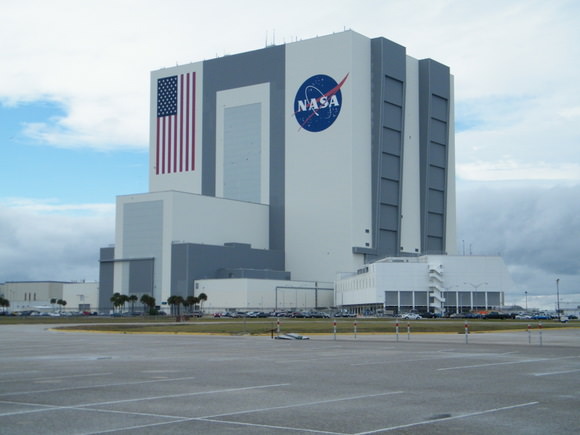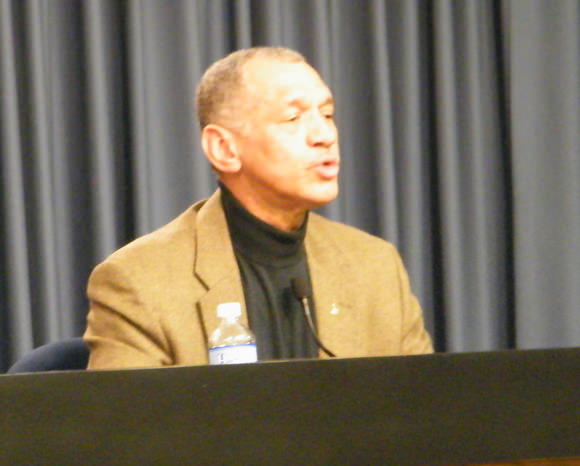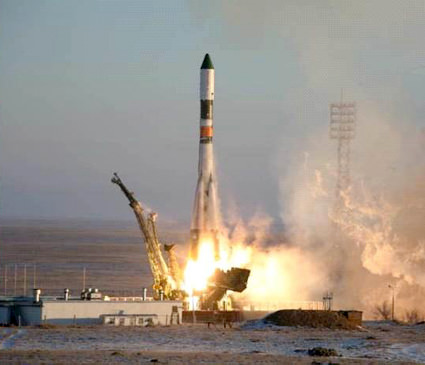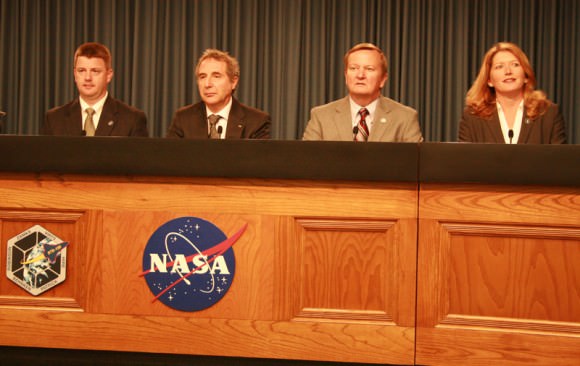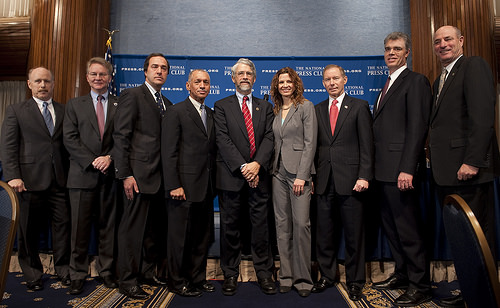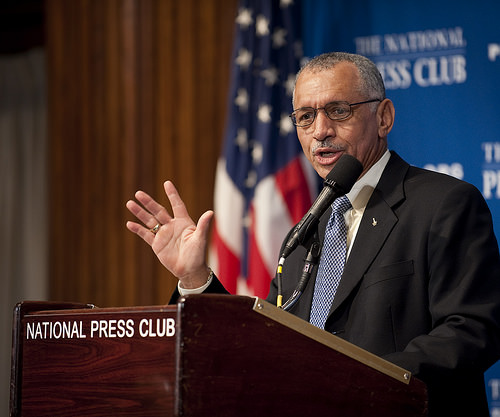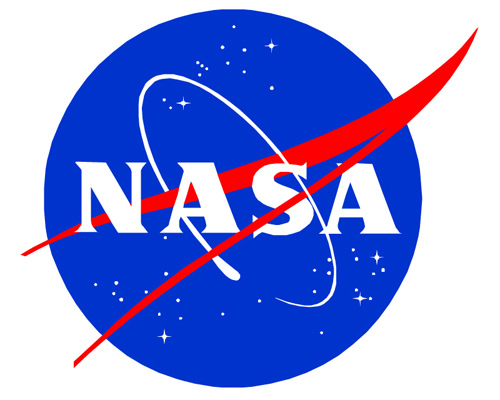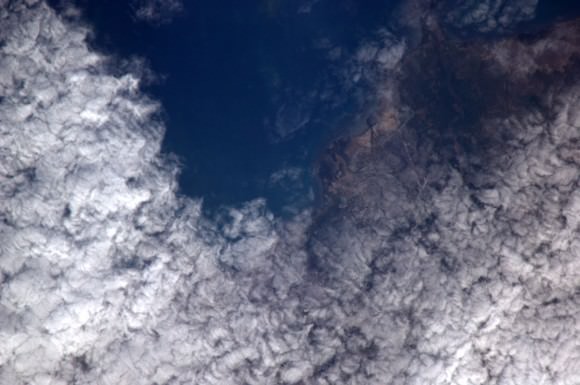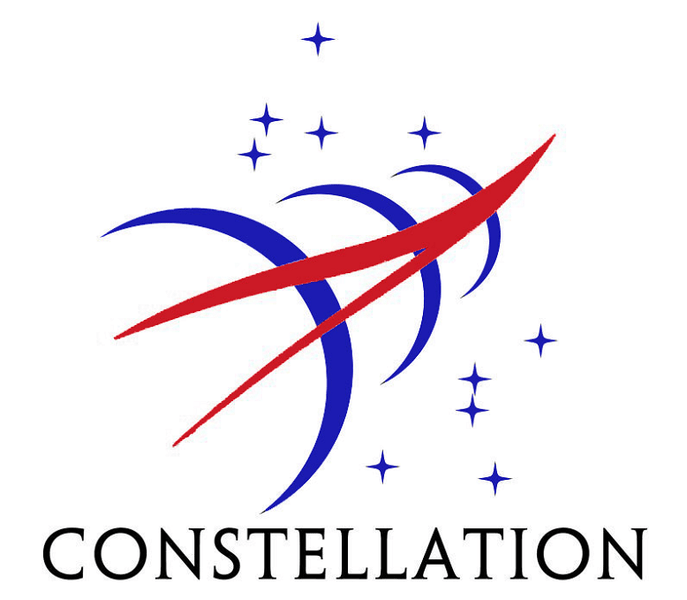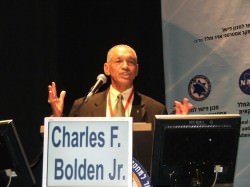[/caption]
The cancellation of the Constellation program compounds an already bleak picture for the Kennedy Space Center and those who work there. 7,000 shuttle workers are expected to lose their jobs by the time the shuttle program comes to an end by late 2010 or early 2011. So far, NASA has not provided an estimate of how many government and contractor jobs will be lost as Constellation — the program that would have sent astronauts back to the Moon — will be slashed. But it could be a hard blow to KSC and communities surrounding the space center.
“This is a big deal and it is going to affect us,” said Kennedy Space Center Director Bob Cabana about the cancellation at a press conference earlier this week. Shuttle launch director Mike Leinbach talked about the “shock” and “uncertainty” that many at KSC are feeling.
But Cabana said that when it comes time to launch the space shuttles, everyone is focused. “The workforce here is the most professional and dedicated I’ve ever seen,” he said.
And since the STS-130 mission is scheduled to launch on Super Bowl Sunday, Leinbach took the opportunity to use a football analogy.
“I asked everybody to treat these last five missions like a professional team. We can be down in the fourth quarter; we can be many, many points behind,” Leinbach said, “but we’re going to play every down and we’re going until the final whistle blows.”
But while NASA officials try to paint the best picture possible, the workforce is definitely feeling apprehensive. Roughly 2,100 NASA civil servants at KSC are expected to remain employed, with assignments shifting toward technology research and development. But most of KSC’s 11,000 shuttle program workers are employed by contractors. Without the shuttle and without a subsequent government-based program for human spaceflight, the jobs will likely disappear.
“The mood at work has been sort of somber for a while now, but it seems a bit more anxious now,” said Jen Scheer, a shuttle technician for a NASA contractor. “Morale is definitely very low. We all love the shuttle program and will be very sad to see it come to an end.”
Scheer and her husband both work at KSC, and have been preparing for potential layoffs by returning to college for additional degrees and looking to other options for potential careers.

“The announcement Monday (about the cancellation of Constellation) really didn’t even faze us- we pretty much expected it,” Scheer said. “But a lot of the people we work with did not have the same reaction. They wanted to believe the shuttle would be extended, or they would be selected to go on to the next program. Many are very scared now.”
In addition to lost jobs, the housing market surrounding the Cape is in trouble. “Due to the depressed market here, not much has been selling for about the past two or three years,” Scheer said. “Property values dropped so sharply that many of us owe more on our homes than they are worth. So we really can’t leave. But we’ve seen it coming, and we know what we have to do.”
Cabana also said he and his team saw the likelihood that Constellation would be canceled, and have dug in to prepare for the future. He firmly believes human spaceflight will continue at KSC. “Launch Complex 39 is not going to go to waste. The geography of Florida makes it perfect for launching to orbit,” Cabana said. “That’s a unique facility out there with unique assets, and I think they will be available for commercial use also.”
Cabana said they’ve begun to organize to better support future exploration so that KSC is not program-centric, but support centric. “We’re working to define what our role is in commercial space,” he said
Even NASA Administrator Charlie Bolden, speaking at a press conference on Saturday, said that while he can empathize with workers at KSC, he admits he can’t feel what they are feeling. He compared the end of Constellation to a death in the family. “Every body needs to understand that, and give them time to grieve and time to recover,” he said earlier this week. “I have an incredible work force, they have been through this before. This is part of life at NASA, and we manage to recover and go on and do great things.”
But Scheer and her husband continue to plan ahead. As a staunch supporter of spaceflight, Scheer began the Space Tweep Society, an organization with mission to “promote enthusiasm for all things space and to unite those inside the space industry with those who are outside looking in.” To expand what the popular Twitter-based organization does for space education and awareness, Scheer is looking to create a non-profit organization and is planning to apply for education grants. “I think our only hope is going to be to get money from outside this area,” she said. “There are a lot of positive things I want to do to keep the dream of space exploration alive in our country even in the absence of a manned program.”
For more info about the Space Tweep Society
Read Jen Scheer’s article on the Open NASA website about the end of the shuttle program

